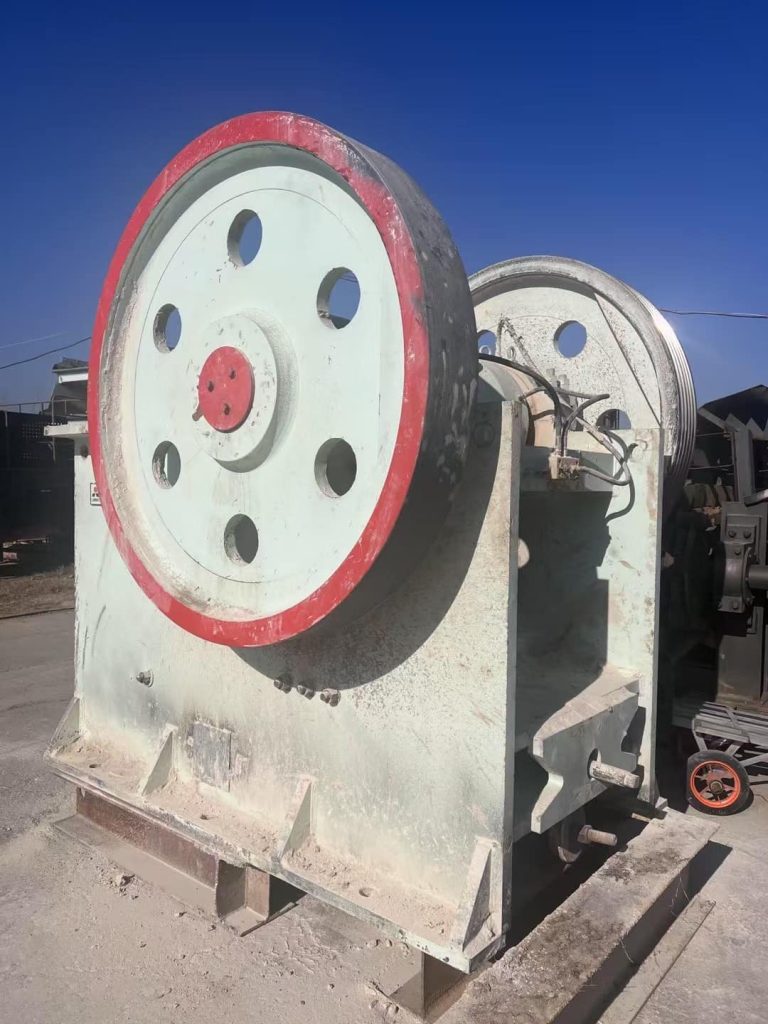How to Reduce Jaw Plate Wear in Jaw Crushers: Causes and Solutions
The jaw plate is a critical component of a jaw crusher, responsible for the crushing process by applying force to the material. However, in heavy-duty applications, jaw plate wear is a common issue, which can lead to increased maintenance costs, reduced efficiency, and downtime. If the jaw plates wear out too quickly, it can significantly affect the crusher’s performance. In this article, we will explore the causes of excessive jaw plate wear and practical solutions to extend their lifespan.

1. Causes of Rapid Jaw Plate Wear
Several factors contribute to the premature wear of jaw plates:
- Material Hardness and Abrasiveness
If the crushed material is too hard or contains a high percentage of quartz, basalt, or other abrasive minerals, it will accelerate wear on the jaw plates. - Improper Feeding Methods
Uneven or excessive feeding can cause localized stress on the jaw plates, leading to uneven wear and reducing their lifespan. - Incorrect Jaw Plate Selection
Using jaw plates made of the wrong material or with an unsuitable tooth profile for the application can result in increased wear. - Excessive Crushing Force
Overloading the crusher or using an incorrect closed-side setting (CSS) can cause higher pressure on the plates, leading to faster wear. - Inadequate Lubrication and Maintenance
Poor maintenance, lack of lubrication, or improper alignment of the jaw plates can cause higher friction and increased wear.
2. Solutions to Extend Jaw Plate Lifespan
To minimize wear and extend the service life of jaw plates, consider the following solutions:
A. Choosing the Right Jaw Plate Material
- High manganese steel (Mn13, Mn18, Mn22) is commonly used due to its toughness and work-hardening properties.
- Alloy steel or composite materials (such as ceramic-reinforced plates) can be used for highly abrasive materials.
B. Optimizing Crusher Settings
- Adjust the closed-side setting (CSS) to ensure proper crushing without overloading.
- Avoid excessive force by maintaining consistent feed size and rate.
C. Proper Feeding Techniques
- Ensure even distribution of material in the crushing chamber to avoid localized wear.
- Use a vibrating feeder to maintain a stable and controlled material flow.
- Prevent oversized material from entering the crusher to reduce shock loads.
D. Regular Maintenance and Inspection
- Rotate and flip jaw plates periodically to ensure even wear distribution.
- Monitor wear patterns and replace plates before excessive wear occurs.
- Ensure proper lubrication of bearings and toggle plates to reduce friction.
E. Using Reinforced Jaw Plates
- Consider using toothed jaw plates with special designs to improve grip and reduce slippage.
- Reinforced jaw plates with wear-resistant coatings can significantly extend service life.
3. Conclusion
Excessive jaw plate wear in jaw crushers can increase operational costs and downtime. By selecting the right materials, optimizing crusher settings, ensuring proper feeding techniques, and maintaining regular inspections, operators can significantly extend the lifespan of jaw plates and improve overall efficiency. Implementing these best practices will lead to higher productivity, lower maintenance costs, and improved crusher performance.
- > Jaw Crusher with a Capacity of 80 Cubic Meters Per Hour: Applications and Benefits
- > HSPF Series Impact Crushers for Ore Crushing
- > Applications and Advantages of Jaw Crushers in South American Mining Operations
- > Crushing Construction Waste with Mobile Jaw Crushers
- > Exploring the PEX 250×1000 Jaw Crusher in Australia: Key Features and Applications
- > Impact Crusher for Processing Dolomite and Tantalite in Mining Plants
- > Compact Portable Crushers: An Ideal Solution for Small-Scale Mining Operations
- > Crushers in Gold and Platinum Mining: Streamlining the Extraction Process


Online




Message
